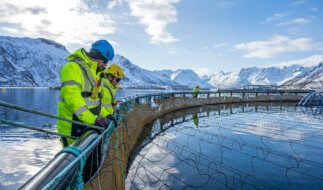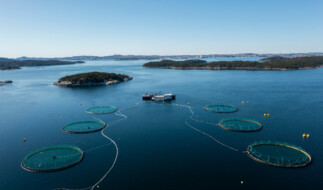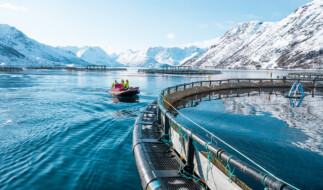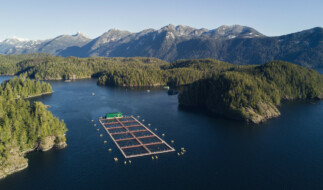You Are What You Eat: How Farmed Salmon Get Their Color and Vital Nutrients
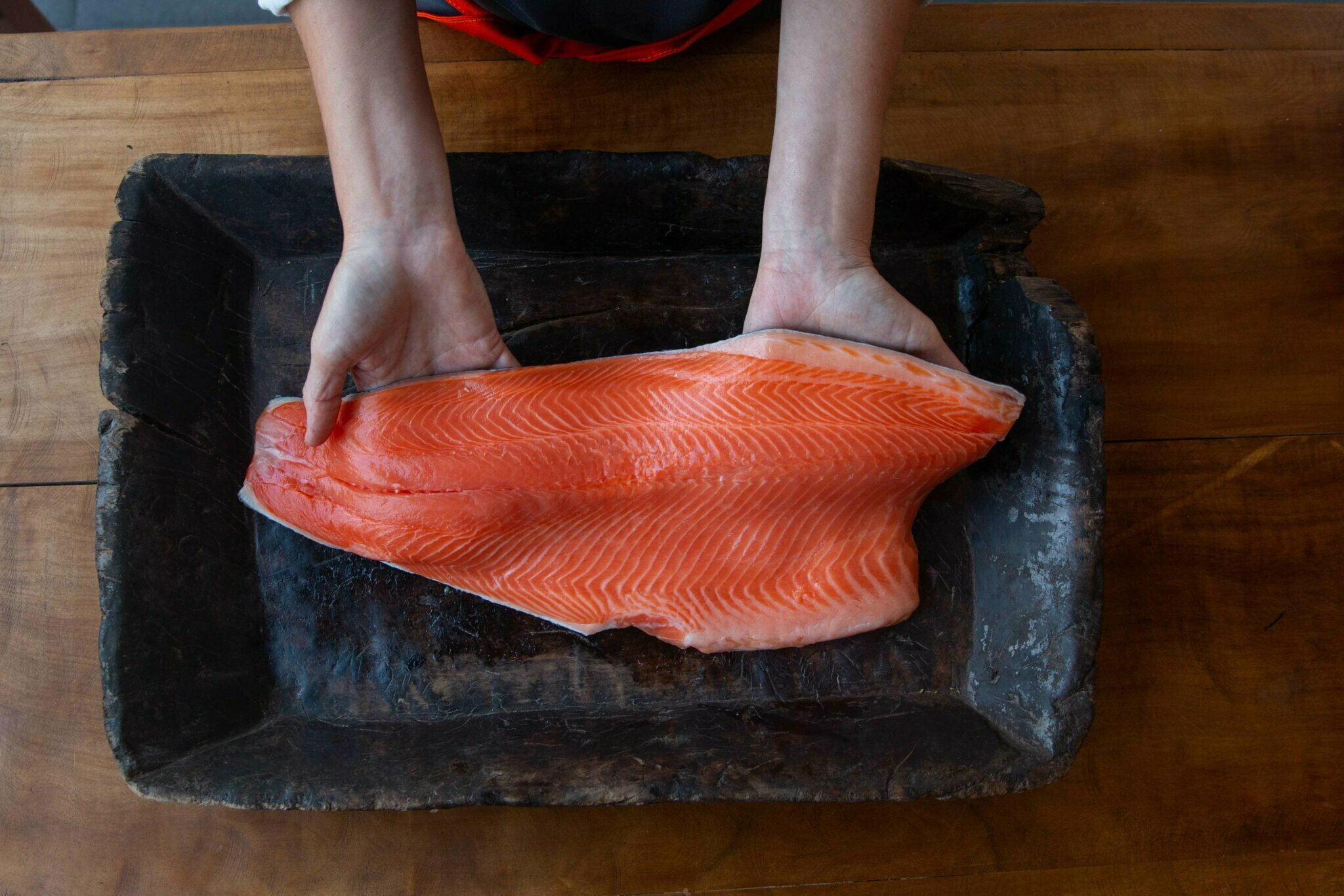
Never has the saying, “you are what you eat” been more truthful! The color of salmon, wild or farmed, is determined by its diet. Ranging from bright red to paler pink, the color of fish is a result of the levels of carotenoids present in what the fish eat.
And yes, that word carotenoids, does relate to carrots. There are more than 600 naturally occurring carotenoids and they are classified as pigments, as they are biological substances which impart color to the tissue of organisms that consume them. The carotenoids salmon eat are the same pigments which make carrots orange and flamingos pink, and they are necessary for salmon health.
What makes salmon pink?
Both wild and farmed salmon consume a specific carotenoid in their diets called astaxanthin, which they need to support metabolic, muscle and immune functions. Astaxanthin is a naturally occurring antioxidant found in plankton and crustaceans which the salmon eat, and is an important component of the salmon diet. As salmon farmers, we provide farmed salmon with feed which replicates its natural diet, including astaxanthin as a staple fish feed ingredient.

The color of different species of salmon can vary due to the differences in their diets, such as the difference here between BluGlacier Atlantic salmon, Ora King salmon, and Silverside Coho salmon.
Why do salmon range in color?
The color of different species of salmon can vary due to the differences in their diets, depending on how much carotenoid-rich food is in their diet and the different forms the carotenoids come in.
Why do salmon need astaxanthin?
Astaxanthin is a vital antioxidant that salmon need to maintain their health and promote healthy growth. About 90% of the astaxanthin farmed salmon consume directly supports their metabolism, which helps them turn their food into energy. It’s so essential for their health that we see it passed down in their eggs, which are also a pink color.

Salmon get their pink/red color from eating carotenoids.
Health benefits of astaxanthin
Some people are concerned that dyes are added to farmed salmon, but rest assured, this is the antioxidant – astaxanthin – included to help replicate the fish’s diet in the wild and is essential for salmon health. In fact, you can even buy astaxanthin as a supplement at your local health food store. Many buy it to help with immune system functions and muscle soreness due to exercise, though the scientific evidence is not settled on its effectiveness.
Astaxanthin is a powerful antioxidant both for fish and humans, and studies have shown the following benefits of astaxanthin for human health:
- Supports heart, brain, and gut health with its anti-inflammatory properties
- Reduces risks of certain cancers and diabetes
- Prevents inflammation during high-intensity physical activity
- Reduces inflammation from sunburn and blocks cell damage from UV rays
- Recent studies also suggest that it could help support immune systems to fight off viral infections and diseases
GSI members’ use of astaxanthin
At GSI, we know that the ingredients we use in our feed directly impact the health and well-being of our salmon, and in turn affect the nutritional quality of the product we serve to our customers. We of course want our salmon to be of the highest standard, which is why we are continually assessing the salmon’s diet to ensure it supports optimal health. This is why our salmons’ diet includes astaxanthin, whether derived from nature or nature identical.
So, next time you hear dyes are added to farmed salmon, you can put your improved cognitive function carotenoids into action by sharing that that is a common misperception, and in fact it’s due to an antioxidant included in their diets to help keep them and us healthy.
